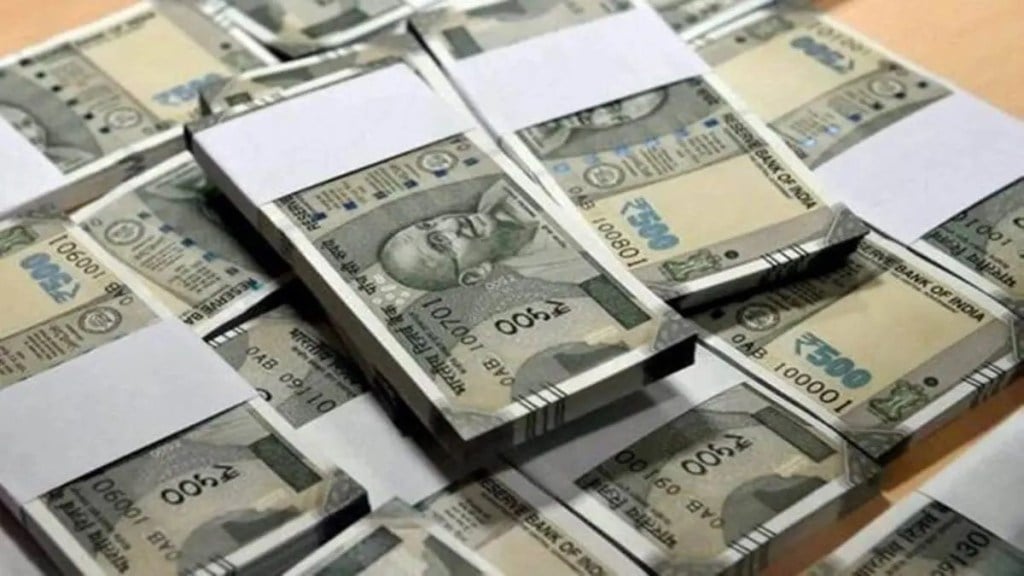– By Ajay Garg
In navigating the intricate landscape of India’s fiscal outlook for 2024, the recently announced budget is a pivotal roadmap that charts the course for economic revitalization, innovation, and sustainability. Finance Minister Nirmala Sitharaman’s unveiling of the fiscal plan signifies not just a response to immediate challenges but a strategic vision for the nation’s financial trajectory.
At the forefront of this budget is the projection of a fiscal deficit at 5.9% of GDP in FY24 down from 6.4%, a measure interpreted as a calculated step towards economic recovery while maintaining fiscal prudence. The revised total expenditure of Rs 44.90 lakh crore aligns with our perspective, indicating a strategic allocation of resources to stimulate economic activities across crucial sectors, setting the stage for a robust economic revival.
Amrit Kaal, marked by a strategic shift, prioritizes Infrastructure and Development through major railway corridor programs, foreign investment promotion, and comprehensive airport expansion under the UDAN scheme. Notable allocations in sectors like Defence and Transportation underscore the government’s commitment to economic growth and national security.
Inclusivity is a cornerstone of Amrit Kaal, evident in initiatives such as improved women’s healthcare, housing schemes, and support for middle-class homeownership. Programs like Saksham Anganwadi and Poshan 2.0 accelerate nutrition delivery and early childhood care. In agriculture, focus on Nano-DAP application and the Pradhan Mantri Matsaya Sampada Yojana aims to boost productivity and employment in aquaculture.
Revenue strategies, excluding borrowings, are anticipated to yield Rs 27.56 lakh crore, with tax receipts contributing significantly at Rs 23.24 lakh crore. This underscores the government’s commitment to a resilient taxation framework, a crucial element for building a strong financial foundation amidst a burgeoning economy.
Looking ahead, we can acknowledge the ambitious targets set forth in the budget, aiming to reduce the fiscal deficit to 5.1% in FY25 and pushing it below 4.5% by FY26. These targets reflect a commitment to fiscal prudence, an essential component for sustaining economic stability and fostering investor confidence.
The projected gross market borrowing of Rs 14.13 lakh crore for FY25 aligns with our analysis, indicating a strategic approach to securing substantial capital necessary for driving development projects and catalyzing economic activity. Simultaneously, the noteworthy 11.1% increase in capital expenditure for the next fiscal year to Rs 11.11 lakh crore reflects a steadfast focus on infrastructure development and employment generation, reinforcing an optimistic outlook.
The introduction of an innovative financing model, establishing a Rs 1 lakh crore corpus with a 50-year interest-free loan, can be seen as a groundbreaking initiative. It aims to facilitate long-term financing at minimal interest rates, underscoring the commitment to economic growth. Furthermore, the launch of advanced technology for deep tech in defense resonates with perspective on the importance of technological advancements and national security.
The Viksit Budget aligns with Amrit Kaal’s vision of inclusive prosperity, directing funds to vital sectors like agriculture, food processing, and healthcare. Initiatives such as Pradhan Mantri Awas Yojana (Grameen) and Atmanirbhar Oilseeds Abhiyaan drive comprehensive development. The budget’s allocations for schemes like Ayushman Bharat-PMJAY and Mahatma Gandhi National Rural Employment Guarantee Scheme reflect a balanced approach to social welfare and economic development.
Amrit Kaal’s tax reforms showcase substantial growth in collections, efficient processing, and increased tax buoyancy. The focus on long-term interest-free loans for states positions tax reforms as pivotal in fostering sustained economic growth. Overall, Amrit Kaal, with its strategic shifts, inclusive development, and impactful tax reforms, charts a course towards holistic progress and resilience.
Sustainability initiatives, such as rooftop solarisation providing 1 crore households with 300 units of free electricity per month, align in view of responsible economic growth. The expansion of Metro Rail and Namo Bharat to more cities, coupled with the conversion of rail bogies to Vande Bharat coaches, resonates with our understanding of the government’s commitment to efficient public transportation and enhanced connectivity. In the realm of tourism, we can acknowledge the strategic allocation of resources for port connectivity projects in islands, including Lakshadweep, as a move to stimulate economic development in these regions.
Sustainability initiatives, such as supporting Electric Vehicle (EV) manufacturing and charging infrastructure, resonate focus on responsible and green economic practices. The introduction of a new scheme for bio-manufacturing aligns seamlessly with a perspective on promoting green growth and minimizing the ecological footprint. The announcement of three major railway corridors – Port Connectivity Corridor, Energy, Mineral, and Cement Corridor, and High Traffic Density Corridor – aligns with an understanding of the government’s dedication to fortifying transportation infrastructure and connectivity across the nation.
To sum it up, the FY24 budget reveals a resolute and ambitious roadmap for India’s economic resurgence and sustainability. From a standpoint, the focus on fiscal discipline, innovative financing, technological advancements, green initiatives, and infrastructure development positions the country for a robust and prosperous future.
(Ajay Garg is the Director and CEO at SMC Global Securities Ltd.)
(Disclaimer: Views expressed are personal and do not reflect the official position or policy of Financial Express Online. Reproducing this content without permission is prohibited.)
